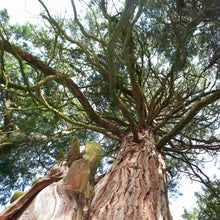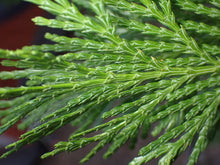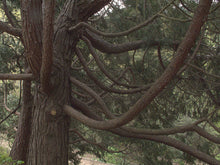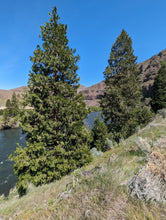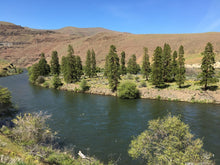
Calocedrus decurrens
Incense cedar is a large conifer that is popular as a yard tree thanks to its relatively narrow, attractive crown of branches and drought tolerance. Its bark is smooth orange-brown when young and weathers grayish and fissured with age. The needles are arranged as fan-like, lustrous sprays that stay bright green throughout the year and the cones turn orange to yellow-brown when mature.
- Plant type/canopy layer: evergreen, perennial, large tree
- Size at maturity: 100-150' tall, 30' wide
- Light requirements: full sun to part sun/part shade
- Moisture requirements: dry to moist soil, prefers well-drained
- Bloom time: January
- Growth rate/ease: slow growing, easy to grow
- Wildlife support: overall plant provides foraging, roosting and nesting opportunities for countless species of birds and mammals including hummingbirds, attracts beneficial and other pest eating insects and is a caterpillar host plant and larval food source for native butterflies and moths. It is also the preferred host of a wood wasp (Syntexis libocedrii), an evolutionarily ancient species which lays its eggs in the smoldering wood immediately after a forest fire (EMSWCD).
- Native habitat/range: common in montane forests, mixed conifer forests, canyons and slopes, at altitudes between 650-2750m from the Coast and Cascade ranges of Western Oregon south through California to northern Baja California, Mexico and east to western Nevada. Portland Plant List - no.
- Special features & uses: drought tolerant; wood used for lumber, siding on houses and is the primary material for pencils, because it is soft and tends to sharpen easily without splintering; landscape uses include pollinator gardens, woodland gardens, erosion control, windbreaks and habitat hedgerows
Gardening with Incense Cedar: Incense cedar an attractive, popular, and extremely drought-tolerant yard tree. It will particularly thrive in full sun to partial shade in moist, well-drained soil. If you have the space for a large tree, it will provide critical wildlife habitat, sequester carbon, and help mitigate urban heat islands in your neighborhood for generations to come.
Photo Credit 1: "File:100 2121 Calocedrus decurrens 3 mag 09 giardino di valsanzibio.jpg" by Stefano59Rivaraforcommons is licensed under CC BY-SA 3.0
Photo Credit 2 (needles close-up): © Cricket Raspet, some rights reserved (CC-BY)
Photo Credit 3: "H20100410-2233--Calocedrus decurrens--UCBG" by John Rusk is licensed under CC BY 2.0
Photo Credit 4 (in the wild): © Timothy McNitt, some rights reserved (CC-BY)
Photo Credit 5 (riverside population): © Ed Alverson, some rights reserved (CC-BY)





